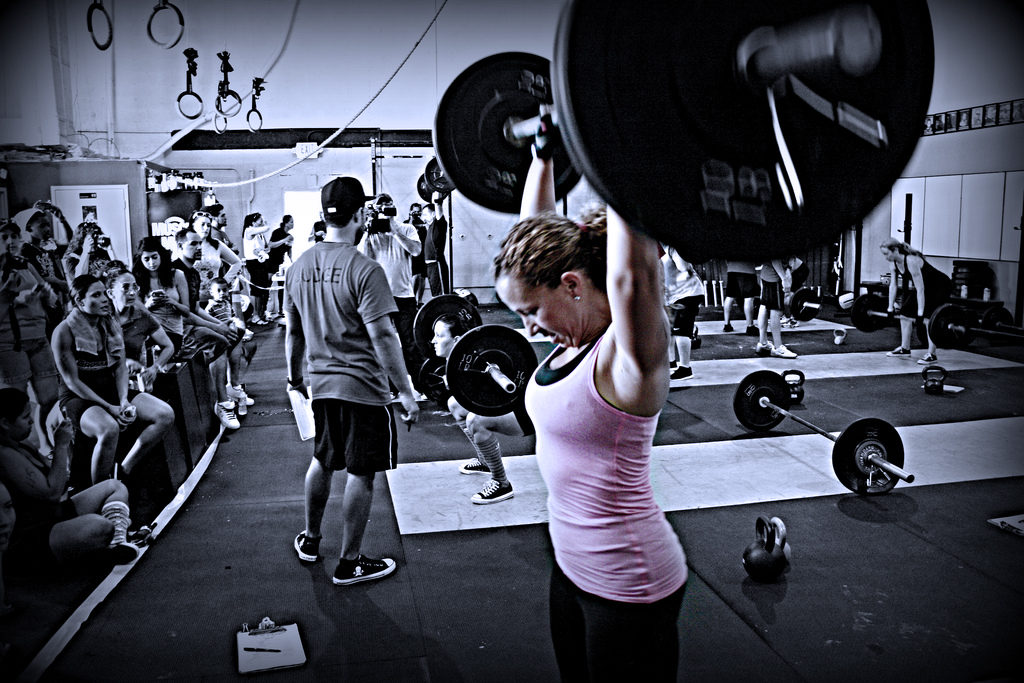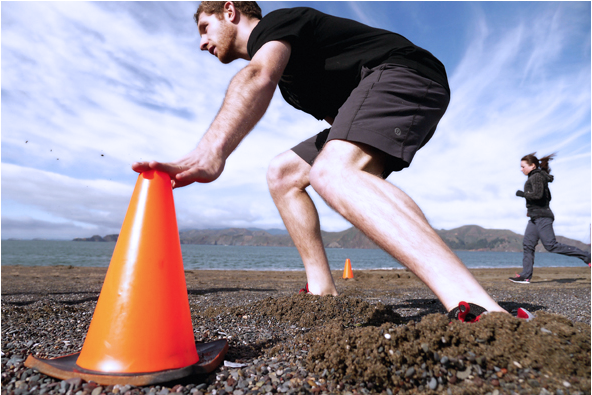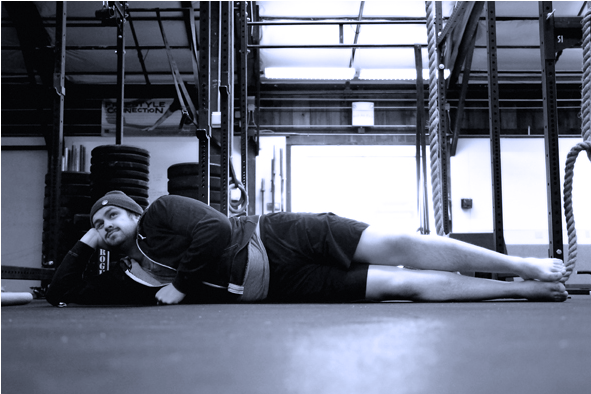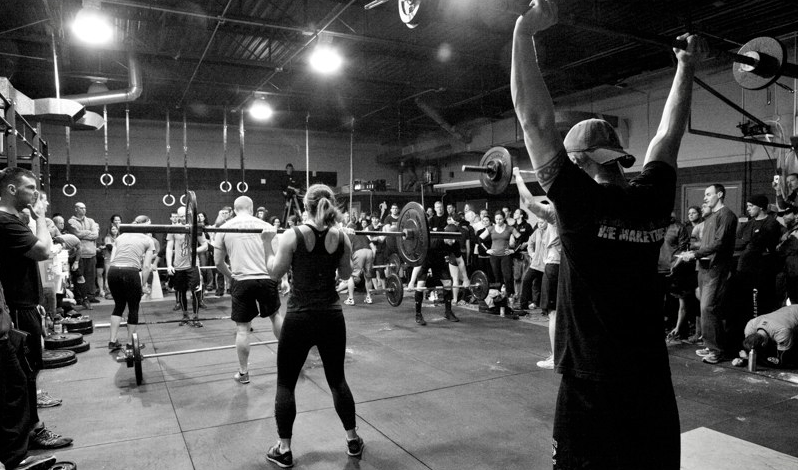You wanna jump up, jump up and get down and … prevent mistakes crossfitters make.
Oh hey! Glad you’re here.
This article is intended to help those new to crossfit to develop and maintain good crossfit habits. It’s to help prevent mistakes crossfitters make.
If that’s you, well howdy, hallo, privyet, salut, caio, kon’nichiwa, hāi, shalom and salaam!
Well, that’s if you actually know what crossfit even is. Some of you out there may not. Thus, the first part of this article gives a brief overview of what crossfit is. Then afterward we get into the meat and potatoes and the actual subject of this article.
Which, funny as it may sound, is not really meat and potatoes. It’s more like … “a training philosophy that coaches people of all shapes and sizes to improve their physical well-being. It also improves cardiovascular fitness in a hardcore yet accepting and encouraging environment.”
If you’re a crossfit veteran, you can just scroll down to start learning which overrated crossfit exercises and mistakes to avoid.
If you’re a beginner, as they used to say in Celebrity Deathmatch …
“Let’s get it on!”
To really nail down what crossfit is, we turn to the guys over at Nerdfitness.com. We’ll let them enlighten you in their excellent, nerdish way. (We love them because THEY would get our Celebrity Deathmatch reference.)
What the Hell is CrossFit?
“CrossFit is advertised, in four words, as ‘the sport of fitness.’
With constantly varied, high-intensity functional movements, CrossFit is a training philosophy that coaches people of all shapes and sizes to improve their physical well-being and cardiovascular fitness in a hardcore yet accepting and encouraging environment.
Here’s the definition of CrossFit from the official site:
CrossFit is the principal strength and conditioning program for many police academies and tactical operations teams. It’s also the program used by military special operations units, champion martial artists, and hundreds of other elite and professional athletes worldwide.
Our program delivers a fitness that is, by design, broad, general, and inclusive. Our specialty is not specializing. Combat, survival, many sports, and life reward this kind of fitness. On average, it punishes the specialist.
CrossFit contends that a person is as fit as they are proficient in each of ten general physical skills. These are cardiovascular/respiratory endurance, stamina, strength, flexibility, power, speed, agility, balance, coordination, and accuracy.
Or, in nerd speak – CrossFit is a training program that builds strength and conditioning through extremely varied and challenging workouts. Each day the workout will test a different part of your functional strength. Or, it may test conditioning, not specializing in one particular thing, but rather with the goal of building a body that’s capable of practically anything and everything.
CrossFit is extremely different from a commercial gym…and not just because you won’t find any ellipticals, weight machines (gross), or Zumba classes …
… According to the CrossFit site, this program ‘is designed for universal scalability making it the perfect application for any committed individual regardless of experience. We’ve used our same routines for elderly individuals with heart disease and cage fighters one month out from televised bouts. We scale load and intensity; we don’t change programs.‘

What that means is that every day there is a particular workout prescribed (you’ll often see this written as Rx’ed) for everybody that comes to CrossFit. Rather than having one workout for older women and another for hardcore athletes – there’s ONE workout each day that is completely scalable based on your skill.
For example, if the workout calls for squats with 135 pounds but you can only do squats with the bar (45 pounds), then that’s where you’ll start. If you’re injured and can’t do squats at all, a similar movement will be substituted. As well, if the number of reps is too many for your current ability, that will be reduced. As you get stronger and more experienced you’ll work your way towards eventually doing the workouts as prescribed.
Now, although CrossFit can be for everybody, it certainly ISN’T for everybody. In this blogger’s humble opinion, CrossFit is perfect for a few types of people:
Beginners to weight training – If you have NEVER weight trained before (or trained only on machines), CrossFit is a great place for you to start. That’s true provided you have a great coach, which I’ll cover shortly. You’ll learn how to do all of the important lifts in a super supportive and nonjudgmental environment. You might even find that…GASP…you love strength training!
People looking for support and community – This is the appeal to CrossFit for me…every CrossFit gym has a really tight knit community feel to it. You’re not just a membership payment to them. You’re a person that needs help. When Nerd Fitness gyms start popping up (don’t think it won’t happen!) I’ll be drawing a lot of inspiration from CF as to how members are so supportive and inclusive of each other.
Fitness fanatics – You know those people that love to work out every day and feel like something is missing if they don’t? The way CrossFit is structured, you are working out with regular consistency. The general protocol is 3 days on, 1 day off…but many CrossFitters (cough Staci cough) end up at the gym every day, or sometimes even twice a day. It’s addicting.
Masochists – and I mean that in the nicest way possible. CrossFit rewards people for finishing workouts in the least amount of time possible. This means that you’ll often be in situations where you are using 100% of your effort to finish a workout. You’re exhausting yourself, and forcing yourself through incredible amounts of pain.
Former athletes – CrossFit has built-in teamwork, camaraderie, and competition. Almost all workouts have a time component to them. You either have to finish a certain number of repetitions of exercises in a certain amount of time, or the time is fixed and you need to see how many repetitions you can do of an exercise. You get to compete with people in your class. You can also go online to see how you did against the world’s elite CrossFit athletes. There are even nationwide competitions for those that become truly dedicated ….”
There is a LOT more information on the origins of crossfit training in the article above. In fact, the Nerd Fitness peeps mention that their article on “what is crossfit” is pretty much their longest article ever. If you’d like to read it in its entirety (at something like 6,000 words) and have the patience, head over there. You can check out more on that and how to prevent mistakes crossfitters make.
You can do so by clicking the title of the article above, or by clicking on the image immediately below it.
The short version is spelled out in the video below. 😉
What is CrossFit?
[thrive_leads id=’135′]
Watched that? Great. Time to move on. We’ll now cover five common eating mistakes crossfitters make. Then we’ll go over the ten most common mistakes, period.
The article below comes to you originally via Chris Skafidas and the good folks over at Crossfit Chicago. It’s not for crossfitters alone, but it does apply. It’s all about dietary mistakes crossfitters make. (Their link has gone dead and the article doesn’t seem to be live anymore. BUT! It was when we first wrote this. Anyway, read on.)
Five Common Nutritional & Dietary Mistakes Crossfitters Make

“Given that we’re wrapping up the Paleo Challenge, I thought it would be a good idea to put out a short list of common nutritional mistakes many people make. Whether you are just ending the challenge, are new to Paleo, or don’t follow it at all, keep these things in mind when you’re attempting to make smart choices regarding food. Some of this may be old hat to many of you, but a refresher never hurts.
- Relying on labels such as “natural” or “organic” to determine whether a food is actually healthy.
Many people trip up here because they read natural and/or organic and automatically assume the food is healthy. A lot of the time, these are just buzzwords. They’re used effectively to advertise the food and sell product. Think about it – if you read “organic sugar” on a label, is that a whole hell of a lot different than regular sugar with respect to nutritional value?
This is where reading the label and understanding the ingredient list is key. A lot of foods with labels like this may still contain highly processed ingredients and/or additives. Read your labels and make informed decisions. If it looks suspect, walk away. Also, products labeled “natural” or “organic” are inherently more expensive.
- The thought that being thin or using weight as a test of health.
This one bugs me. I know plenty of thin people who can’t run, lift any kind of reasonably heavy weight or do a pull-up. I also know plenty of chain smokers who are thin. Does this make them healthy? Definitely not. Although it’s better not to be overweight, just because your physical appearance is pleasing to the eye does not mean everything on the inside is in good working order.
For example, people that appear slim can be diabetic or get cancer. While all of us are inherently vain to some degree, superficial image isn’t everything. This is a significant problem in our culture. Most “fad” diet programs typically focus on low calories or low fat. This is often to the point of the exclusion of quality health or nutrition – “look, you can eat chocolate cake and STILL lose weight!” Give me a break. Please realize that the food you do, or don’t, put into your body determines not just your physical appearance, but your internal and mental health. It also determines quality of sleep and your performance in the gym.
Many people experience their best performance athletically when they’re carrying a few extra pounds than they might like. Still not convinced? Try Paleo for 8 weeks, and go get a full physical and blood test and report back on the results.
- The misconception that exercise can correct unhealthy eating habits.
I had a friend say this the other day in regards to just beginning P90X: “Well, I’m doing it so I can eat whatever I want. If I work out for an hour a day I figure I can get away with eating anything.” Kind of made me cringe when I heard this…and she’s in med school! Listen, this is just a way for too many people to justify extremely unhealthy dietary habits. Diet is the main determinant of body composition, not exercise (another thing few people realize).
Obviously, exercise has many important health benefits, such as the improvement of insulin sensitivity. But why work so hard in the gym just to give it all back with that pint of ice cream you wolfed down before bed? Yes, we can burn off sugar through exercise, but not the insulin or the trans-fats. So they next time you hear someone justify their shitty diet with exercise, remind them that exercise is a part of a healthy diet. It’s not a substitute for one.”
As always, there are more points to the article above. If you’re interested in reading more, just click on the article’s title or the image immediately beneath it.
The next article is specific to crossfitters and mistakes crossfitters make. So pay attention! This one comes from one of the top fitness blogs of 2017, tabatatimes.com and was written by Talayna Fortunato, a crossfitter and professional physical therapist.
The Top Ten Mistakes CrossFitters Make
“ 1. Not Warming Up Properly
Every day it takes me around 30 minutes to warm-up. I start with easy cardio for 5-10 min. then do some light foam rolling and stretching, leg swings, lunges, rotator cuff exercises, and finally movements specific to the workout I’m about to do.
My warm-up has gotten more extensive (and longer) with each year I do CrossFit. Almost to the point that it started to annoy me, and then I remembered back to my gymnastics days: Ever since I was on team at age 8, I remember our warm-ups taking us at least 30 minutes with all of the stretching and other calisthenics we did.
Even though we were young and healthy I believe the gymnastics coaches knew what they were doing to keep us that way. With the intensity of competitive CrossFit, it’s imperative to put in the time for an adequate warm-up and mobility work. If you don’t put in the time now you’ll put it in later when you have an injury.
- Eating Too Strict of a Paleo Diet
If you are a recreational CrossFitter, following a Paleo lifestyle is probably nutritionally adequate. It’s also a good way of maintaining longevity and health. However, if you are a competitive-level athlete and training intensely more than an hour a day, your main source of energy is carbohydrates. Also, strict Paleo simply does not provide enough sources of them.
Now I’m not saying to go out and carb-load on pasta, bread, or sugar. That’s just an inflammatory insulin bomb. I am saying look for complex sources of carbohydrates from plants and low glycemic grains to add into your diet, especially when training is at its peak.
During an interview at the Games, every individual athlete was asked who follows a Paleo diet, and not a single one raised their hand.
- Sacrificing Technique and Movement Efficiency for Intensity and Eventual Technical Breakdown
CrossFit gets results due to the intensity of the workouts, but that doesn’t mean throw all good form out the window. For example, if your back starts rounding when you’re pulling from the ground or you’re chasing wildly after snatches, it’s time to put the bar down until you can regain efficiency. Your back and other body parts will thank you later!
Also if you’re compromising range of motion enough to miss consecutive reps, take a quick rest before you go again. Otherwise you are ingraining poor habits and when you reach that place of pain and fatigue again in competition guess what’ll happen… No Rep!
- Doing Volume for Volume’s Sake Without Intent
Have a purpose! More is not better; better is better.
CrossFitters are notorious for thinking that when they are getting ready to compete, more is better. This mindset leads to the performance of multiple hero WODs in a day with the intent of “loading.” However, what it really does is break the athlete down with laborious repetition and impede lasting gains.
More is not better; better is better. Having a purpose, i.e. knowing the energy system and muscular groups you’re trying to tax during a workout allows you to work smart and hard, not just hard. Again, your body will also thank you later!
- Cherry Picking Workouts and/or Jumping Around Programs
This is for the CrossFitter who walks into the gym and decides when they get there what workout they’re going to do based on what their gym posts and which one of the blogs they follow appears best that day. Blogs are written for a reason, with progressive intent to allow your workouts to build upon themselves for measurable improvements in your numbers.
If you jump from program to program, weekly or even daily, that progress is completely short-circuited. Not to mention you’re probably doing mostly what you’re good at and not working your weaknesses enough.
- Following a Strength Progression that Doesn’t Makes Sense or One Without Any Progression at All
The body adapts to load by responding to meet the load in the form of muscular hypertrophy. There have been many studies showing the best percentages of max load, sets, reps, and frequency to produce optimal gains without under- or overloading the athlete. These studies have produced named strength progression tables, squat cycles, and the like.
If you jump from program to program, weekly or even daily, that progress is completely short-circuited.
You can reinvent the wheel and use yourself as a guinea pig to do your own research, or you can find a viable progression and just follow it. I’ll give you one guess what most long-term successful athletes do.
One other thought to keep in mind is how much loading your conditioning work is providing. An example would be making your conditioning heavy on the weights during the heaviest week of a strength loading cycle (no bueno).”
To see what other mistakes to avoid, click on here to READ THE REST OF THE ARTICLE.
Finally, the moment you’ve been waiting for … that is if you are someone who loves breathing fire …
Immediately below is a:
Full Body CrossFit Workout
We hope you enjoyed this article on crossfit, and mistakes crossfitters make. If you did, please share it on Facebook and be a good neighbor. (You could do that on Pinterest too.)
And, now, as Jim Carry opined in the Truman Show …
“Good afternoon, good evening, and good night.”



